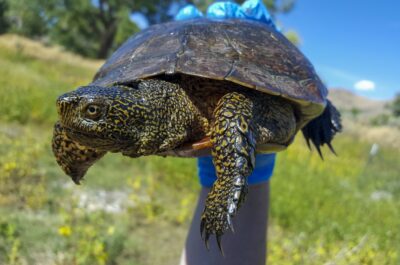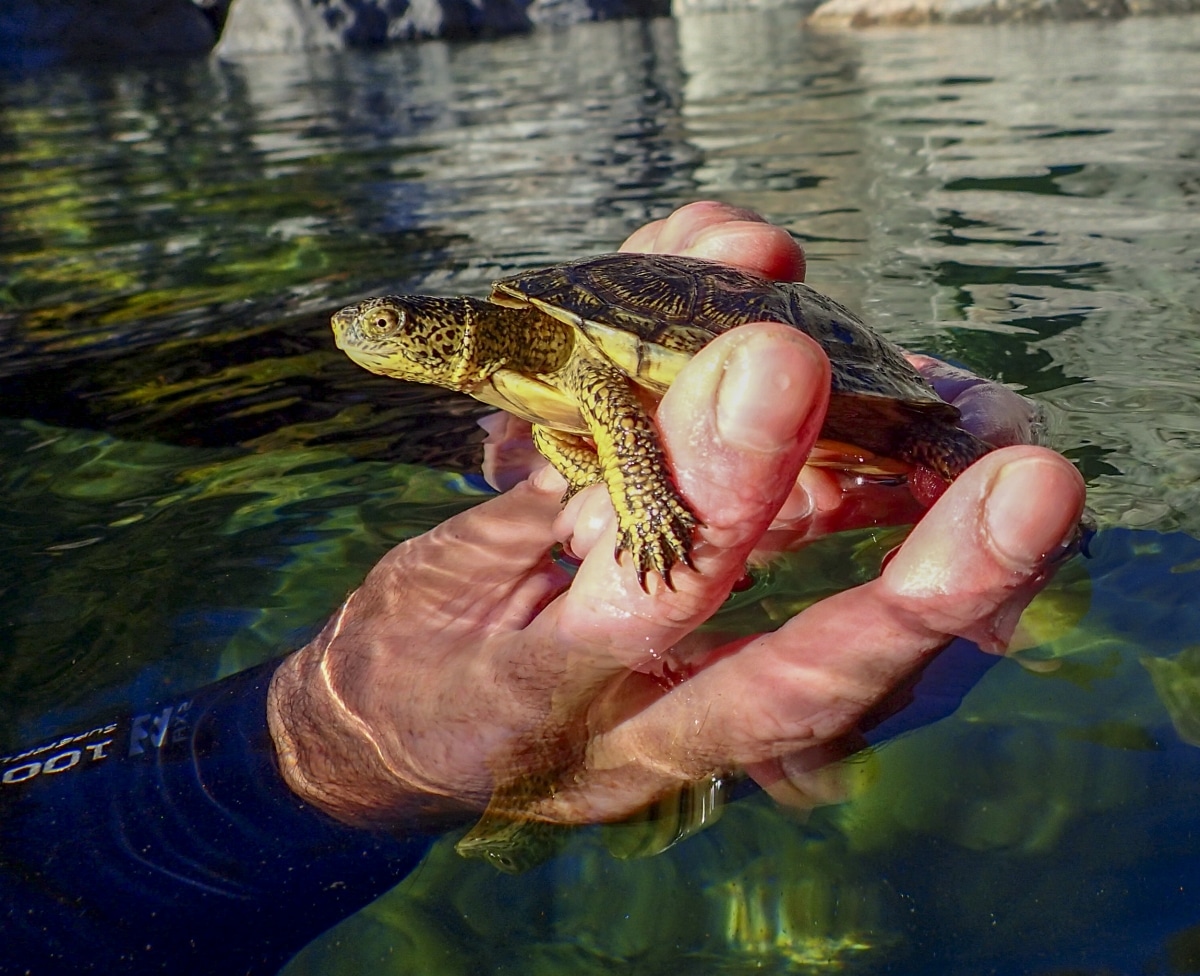The western pond turtle is native to California and much of the West Coast of the United States.
The U.S. Fish and Wildlife Service has reopened the public comment period on the agency’s proposal to list the northwestern (Actinemys marmorata) and southwestern pond turtles (Emys marmorata pallida) as threatened under the Endangered Species Act.
The public comment period will close May 5, 2024. The service is also seeking comments on the 4(d) rule that permits conservation activities of both species. These include wildfire suppression and management, livestock pond maintenance, habitat restoration and the removal of non-native species. The 4(d) rule would give land managers permission to conduct these types of activities without risk violating the Endangered Species Act on their private property, the USFWS wrote in its April 3 press release.

An adult female western pond turtle from the Truckee River in Nevada. Credit: Mark Enders/Nevada Department of Wildlife
The northwestern pond turtle is found in Nevada, Oregon, Washington, and northern and central California, while the southwestern pond turtle resides in Monetary County, Los Angeles, Riverside and San Diego counties into northern Baja California, Mexico.
The assessment of these two species by the USFWS has found that both will sustain wild populations in the near term, but risk extinction due to population losses, a lack of genetic diversity, and the reduced capability to adapt to changing environmental conditions during the next 50 years. These factors are spurring the listing of the turtles as threatened.
8 Southwestern Pond Turtles Rescued From Fire Devastated California Mountains
For those who wish to provide input, you can do so by visiting the Federal Register and search docket FWS-R8-E8-2023-0092
The western pond turtle is native to California and much of the West Coast of the United States. Listed as vulnerable by the IUCN, the western pond turtle is an omnivore, subsisting on insects, crayfish and other aquatic invertebrates as well as plant matter. They are also known to eat fish, tadpoles and dead animal matter.



